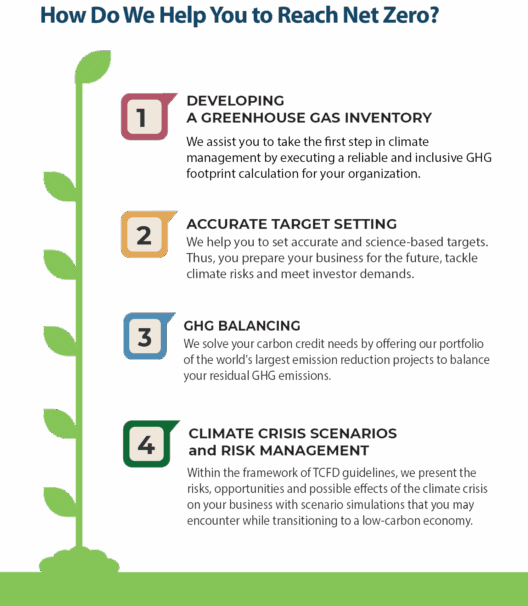In the intricate tapestry of our existence, climate science emerges as the loom upon which the future of our planet is woven. As we stare into the abyss that is climate change, the role of climate science has never been more paramount. It serves as both the compass and the map, illuminating our path toward a sustainable future while warning us of the precipice we approach if we fail to heed the signs. This exploration of climate science’s role in shaping our future encompasses myriad insights from experts across various disciplines, each thread contributing to a deeper understanding of the environmental crises we face.
Firstly, climate science acts like a lens, magnifying the intricate relationships between natural phenomena and human actions. By methodically studying atmospheric variables, oceanic currents, and terrestrial ecosystems, scientists unveil the layered complexities of climate systems. They elucidate the consequences of anthropogenic emissions, revealing how seemingly innocuous choices—such as driving a car or consuming certain products—exacerbate global warming. Through predictive models, climate scientists provide projections that echo like distant thunder, warning us of the repercussions of inaction, such as rising sea levels and increased frequency of extreme weather events.
Secondly, the predictive power of climate science serves as a shadowy guardian. It renders visible the invisible threats lurking in the coming decades. Experts continually refine their models, adjusting for new data and emerging technologies. This dynamic interplay highlights the essential role of ongoing research. As we navigate the complexities of the climate crisis, the scientific community’s insights are akin to the handcrafted maps of ancient mariners, cautiously steering us around the storms we may encounter.
Moreover, the role of climate science transcends academia; it permeates policy-making realms. Governments and organizations rely heavily on climate data to formulate strategic responses to environmental threats. Policymakers equipped with extensive studies and forecasts can make informed decisions regarding energy production, land use, and conservation efforts. For instance, climate models that reveal potential outcomes can influence international agreements, prompting nations to collaborate rather than compete over dwindling resources. This collaborative spirit echoes the age-old wisdom that a rising tide lifts all boats—when one country takes strides towards sustainability, others are likely to follow, encouraged by preliminary successes.
The unique appeal of climate science lies in its ability to transform daunting statistics and projections into compelling narratives, drawing people into the urgency of the climate crisis. Visual representations of data serve as powerful tools. Graphs illustrating the dramatic rise in carbon dioxide levels resemble the tortured face of a beleaguered giant—each year adding further weight to an already burdened world. These striking images engender emotional responses that can galvanize public action, fostering a sense of collective responsibility.
Additionally, climate science cultivates a spirit of innovation. As researchers delve deeper into the mechanisms of climate change, they unearth sustainable solutions that promise to mitigate its impacts. From renewable energy technologies—like solar, wind, and geothermal—to carbon capture and storage initiatives, scientific advancements embody humanity’s response to the encroaching threats of climate degradation. The advent of electric vehicles and energy-efficient systems showcases how scientific inquiry fosters an ethos of resilience. Each new technology is like a brick in the foundation of a transformed society—a society that privileges sustainability over convenience.
Importantly, climate science also emphasizes the significance of biodiversity as both a cornerstone and a casualty of climate change. The intricate web of life on Earth is a delicate ecosystem that climate science strives to protect. By researching the interdependence of species, scientists underscore the importance of conservation efforts, extending an olive branch to endangered flora and fauna. The loss of biodiversity, in essence, signifies not merely the disappearance of particular species but the unraveling of the natural systems that sustain us. Recognizing this interconnection is crucial; it reinforces the notion that every organism plays a vital role in the grand narrative of life on Earth.
The urgency of the climate crisis also necessitates a rethinking of ethical paradigms. Climate justice arises as a significant theme within climate science discourse, as experts illuminate the disproportionate impact of climate change on marginalized communities. Considering socio-economic factors, climate scientists advocate for policies that not only address environmental issues but also rectify inequalities. They advocate for inclusive approaches that empower the most vulnerable populations, ensuring that climate responses are equitable—a fundamental requirement as we strive to reshape our planetary future.
In conclusion, climate science serves as an irreplaceable guide as we face one of the most profound challenges of our time. It illuminates the multitude of potential futures before us, urging us to choose wisely. By providing insights that foster understanding, catalyze policy change, and inspire technological innovation, climate science helps to weave a narrative of hope amidst the chaos. As stewards of this planet, it is our collective responsibility to heed the warnings of experts and embrace the solutions they propose, forging a resilient society equipped to thrive in harmony with the natural world. The loom of climate science has the potential to craft a vivid future—one that honors the interconnectedness of humanity and our environment. The question remains: will we embrace its possibilities?








